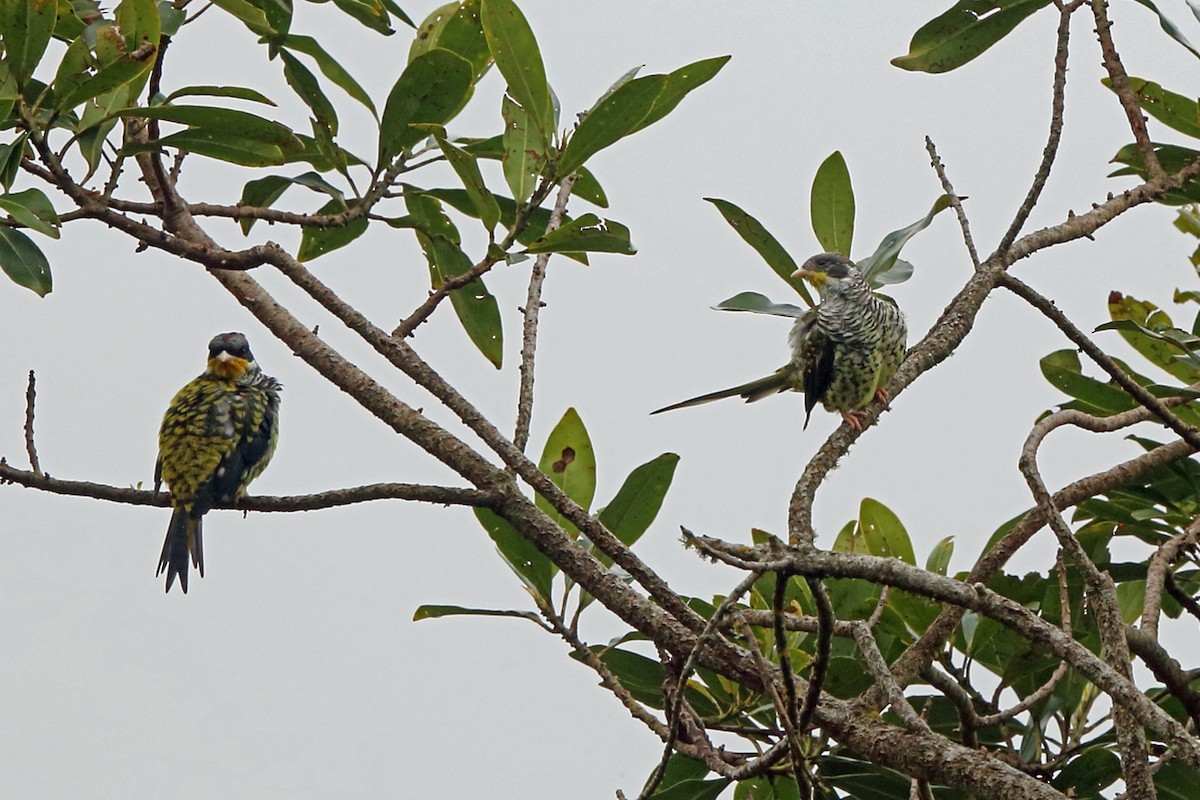Swallow-tailed Cotinga
A species of Swallow-tailed Cotinga Scientific name : Phibalura flavirostris Genus : Swallow-tailed Cotinga
Swallow-tailed Cotinga, A species of Swallow-tailed Cotinga
Botanical name: Phibalura flavirostris
Genus: Swallow-tailed Cotinga
Content
Description General Info
 Photo By Nigel Voaden
Photo By Nigel Voaden Description
The swallow-tailed cotinga (Phibalura flavirostris) is a species of passerine bird in the family Cotingidae. It is the only member of the genus Phibalura. The nominate subspecies (P. f. flavirostris) are found in the Atlantic forest in south-eastern Brazil, eastern Paraguay and Argentina (Misiones only). The subspecies P. f. boliviana, which only was rediscovered in 2000 (after 98 years without any records), is restricted to the vicinity of Apolo in Bolivia. Both populations are threatened by habitat loss. The race P. f. boliviana is treated by BirdLife International and on the World Bird List Version 8.2 as a separate species, the palkachupa cotinga or the Bolivian swallow-tailed cotinga. However, the South American Classification Committee decided not to split the swallow-tailed cotinga in 2011, and a large molecular phylogenetic study of the family Cotingidae published in 2014 found only small differences between the DNA sequences of the two taxa and thus did not provide evidence to support the treatment of P. f. boliviana as a separate species. 
Size
22 cm
Nest Placement
Tree
Feeding Habits
Swallow-tailed Cotinga's diet primarily consists of fruits and insects, with nestlings consuming more insects proportionally. Swallow-tailed Cotinga forages using 'reach' and 'glean' techniques for fruit, and 'sally-strikes' for insects, often seen foraging with other species. Unique feeding times and aerial hunting distinguish swallow-tailed Cotinga from other birds.
Habitat
The habitat of swallow-tailed Cotinga generally comprises semi-humid open forests and forest fragments. These birds are found in regions with forest borders, partially wooded areas, and open spaces that include gardens with trees. They are capable of navigating considerable open distances between woodlots, and are known to reside in areas that have both natural and human-modified environments. Their adaptability allows them to occupy various landscapes, from densely wooded areas to more open cerrado savannas during certain seasons.
Dite type
Frugivorous
General Info
Feeding Habits
Bird food type

Fruit

 Photo By Nigel Voaden
Photo By Nigel Voaden Scientific Classification
Phylum
Chordates Class
Birds Order
Perching birds Family
Cotingas Genus
Swallow-tailed Cotinga Species
Swallow-tailed Cotinga